The national flag of Saint Lucia is a striking and elegant symbol that embodies the unique geography, history, and aspirations of this Caribbean island nation. Adopted on March 1, 1967, and in its current form on February 22, 1979, upon achieving full independence, the flag's design is a testament to the country’s identity and its most famous natural landmarks. It stands as a beacon of pride for Saint Lucians at home and abroad.
A Detailed Look at the Flag's Design and Symbolism
The flag’s field is a serene shade of cerulean blue, a color that immediately evokes the vast sky and the surrounding azure waters of the Caribbean Sea and the Atlantic Ocean. This blue serves as the foundational canvas upon which the central emblem is placed.
At the heart of the flag is a prominent symbol: a unique geometric representation of the island's most iconic feature, the Piton Mountains. This emblem is composed of two triangles. The larger, superimposed triangle is black, bordered by a thin band of white, while a smaller, centered triangle is yellow.
-
The black triangle represents the cultural heritage of the people of Saint Lucia, acknowledging the contributions of both their African and European ancestry. It also symbolizes the resilience, strength, and determination of the nation's people in the face of adversity. The solid, unyielding shape of the triangle mirrors the majestic and enduring presence of the Pitons themselves.
-
The white border that surrounds the black triangle is a symbol of peace and prosperity. It signifies the harmonious coexistence of different races and cultures on the island and the nation's hope for a peaceful and prosperous future. The contrast between the stark black and the bright white also highlights the balance and unity within the society.
-
The yellow triangle, positioned centrally and pointing upwards, symbolizes the island’s perpetual sunshine and its natural beauty. It also represents prosperity, a tribute to the country’s main exports, such as bananas and tourism. Its upward-pointing orientation suggests a forward-looking nation, aiming for progress and a brighter future.
The combination of the two triangles forms a distinctive emblem that not only represents the physical landscape of the Pitons but also acts as a profound allegory for the nation's people and their journey.
Dimensions and Proportions
The official proportions of the Saint Lucian flag are 1:2 (the length is twice the width). This standardized ratio ensures that the flag’s design maintains its intended visual impact and is consistently represented. The central emblem is precisely positioned and scaled to be in perfect harmony with the flag's dimensions.
The Genesis and Evolution of the Flag
The history of the Saint Lucian flag is a fascinating story of national self-determination. Before gaining independence, the island used various flags under British colonial rule. The first modern flag was adopted in 1967, when Saint Lucia became an Associated State of the United Kingdom. This original design, created by local artist Dunstan St. Omer, featured a simplified black and white emblem on a blue field.
When Saint Lucia achieved full independence on February 22, 1979, the flag was slightly modified. The most significant change was the inclusion of the yellow triangle, which was added to represent the island’s economic prosperity and its sunny climate. This new design solidified the flag's visual identity and gave it the form we recognize today. The current flag has remained unchanged since, standing as a constant symbol of the nation's independence and sovereignty.
The Flag's Meaning and Significance to Saint Lucians
For the people of Saint Lucia, the flag is much more than a national banner; it is a source of immense pride and a deep connection to their homeland. It is a visual representation of their natural beauty, their resilient spirit, and their diverse cultural heritage.
The flag is prominently displayed during national holidays such as Independence Day (February 22nd) and throughout the year. It serves as a reminder of the nation’s journey from colonialism to self-governance and the ongoing pursuit of a better life. The black and white elements remind them of the unique blend of cultures that form their identity, while the blue and yellow speak of their beautiful environment and their aspirations for prosperity. The Pitons emblem itself evokes a sense of permanence and strength, reflecting the steadfast nature of the Saint Lucian people.
Interesting Facts
-
The flag's designer, Dunstan St. Omer, is a highly respected local artist often referred to as the "Father of Art in Saint Lucia." His design was chosen from a national competition held in 1967.
-
The Piton Mountains, represented on the flag, are a UNESCO World Heritage Site. They are two volcanic spires, Gros Piton and Petit Piton, that are major tourist attractions and a central part of the island's identity.
-
The blue color on the flag has a specific meaning beyond just the sea and sky; it also symbolizes the fidelity of the nation’s people to each other and to their country.
-
The flag is also known for its elegant simplicity, making it instantly recognizable and easy to reproduce, a key aspect of effective national branding.
In conclusion, the flag of Saint Lucia is a masterpiece of symbolic design. It brilliantly captures the essence of the nation, from its stunning geography to its vibrant culture and future aspirations. It is a unifying symbol that connects all Saint Lucians, both on the island and around the globe, to their unique heritage and identity.
In the demonstration images, full-size flags are shown with proportions of 2:3, and hand-held flags with proportions of 1:2.
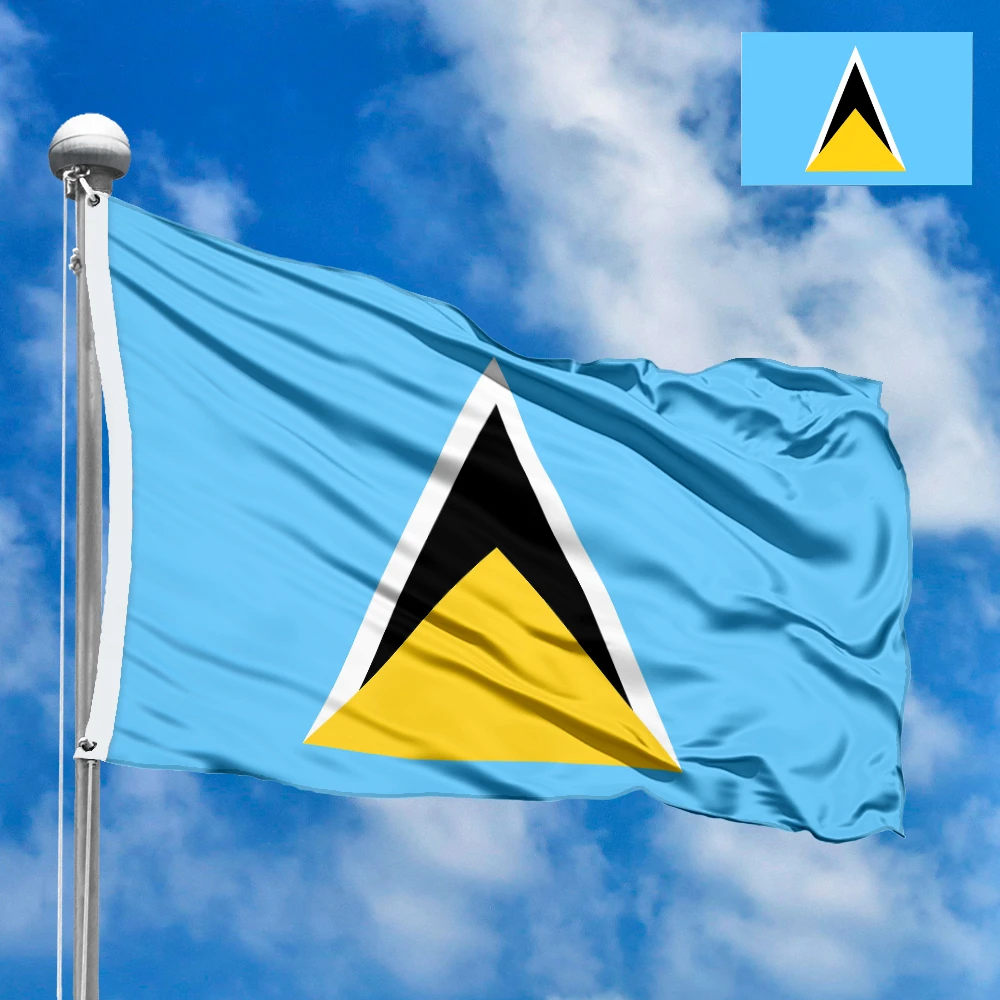

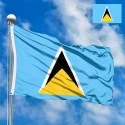

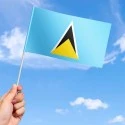

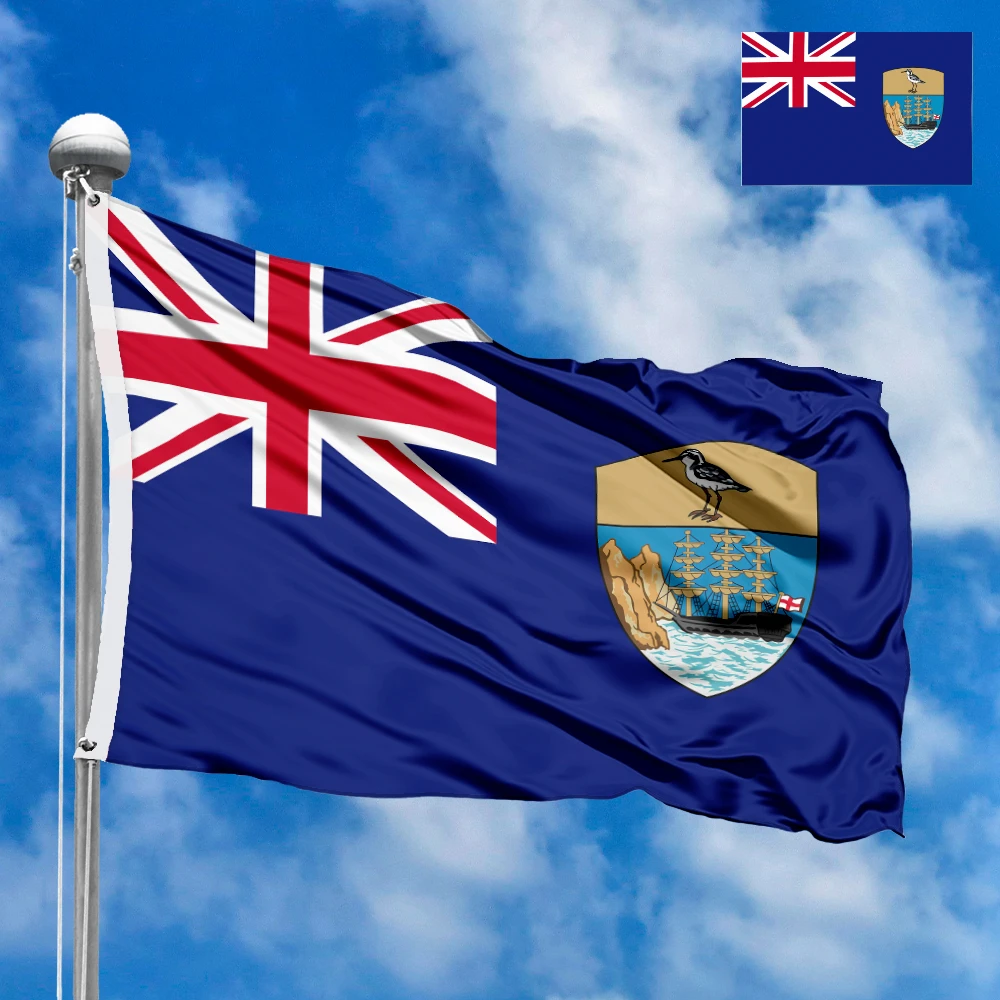
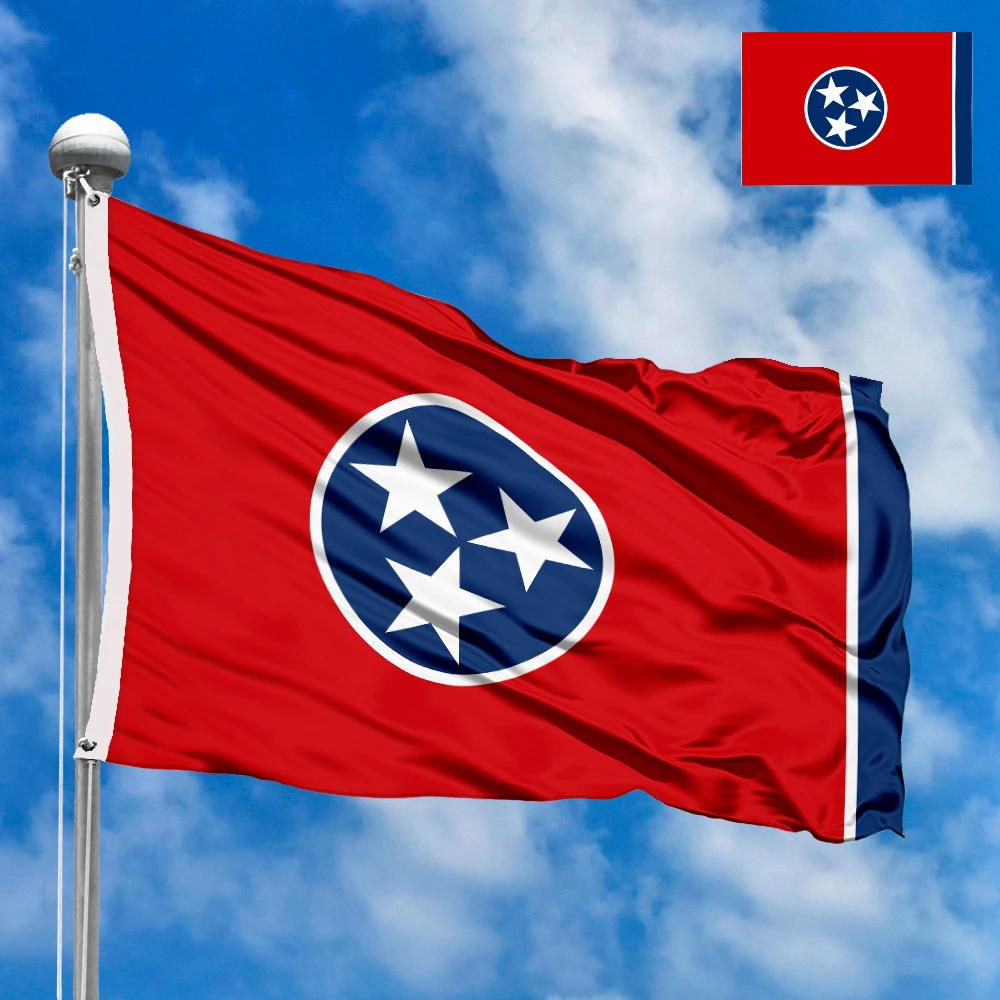
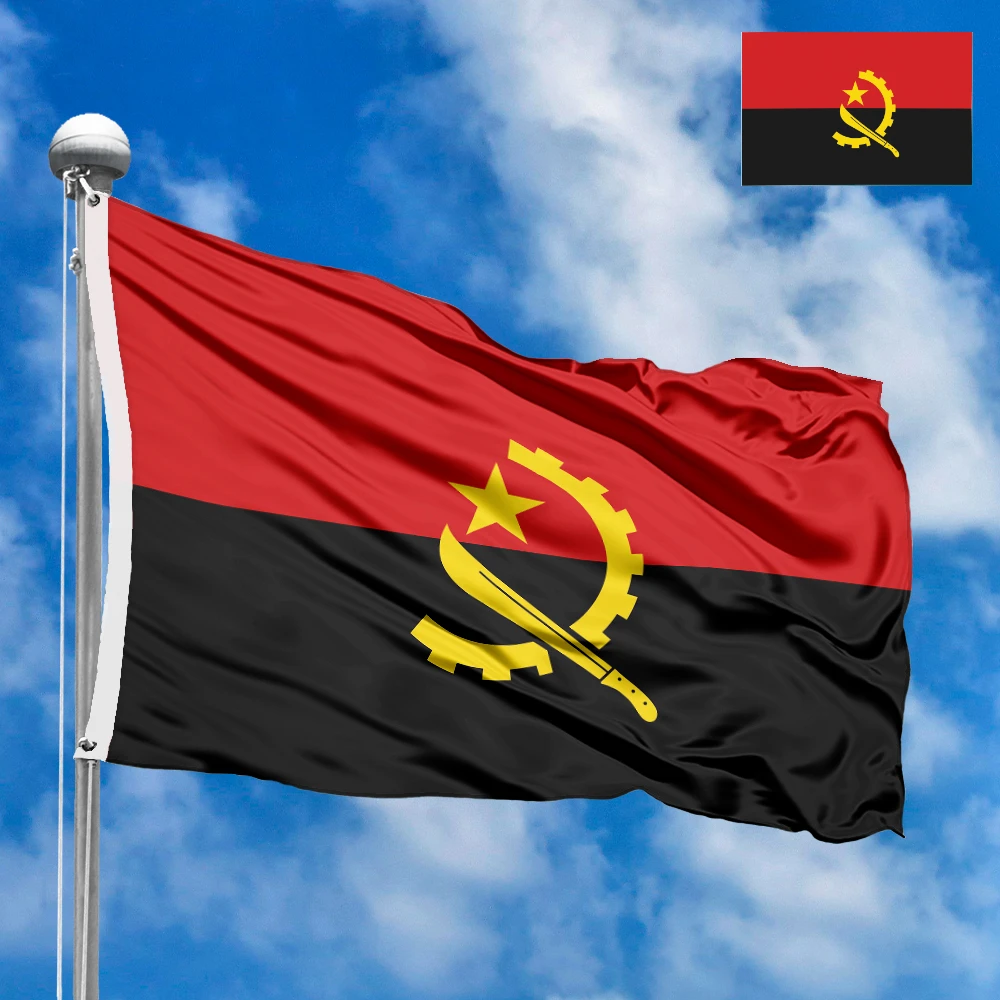

 Waving flag
Waving flag
 Sizes:
Sizes:
 Round flag
Round flag
 Sizes:
Sizes:
 Rectangular flag 2:3
Rectangular flag 2:3
 Sizes:
Sizes: